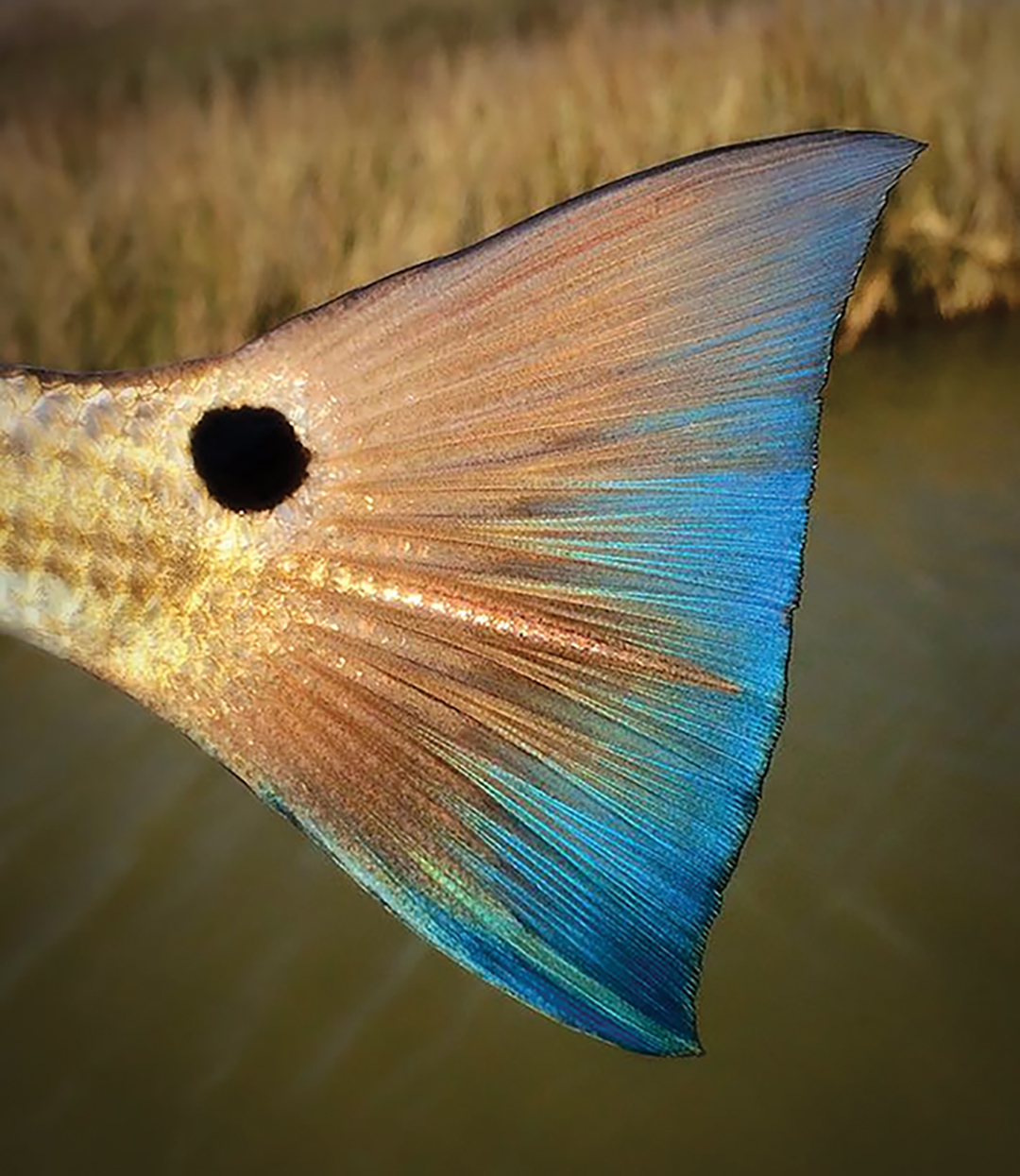Center for Fisheries Research and Development
Red Drum Tag and Release
Page Content
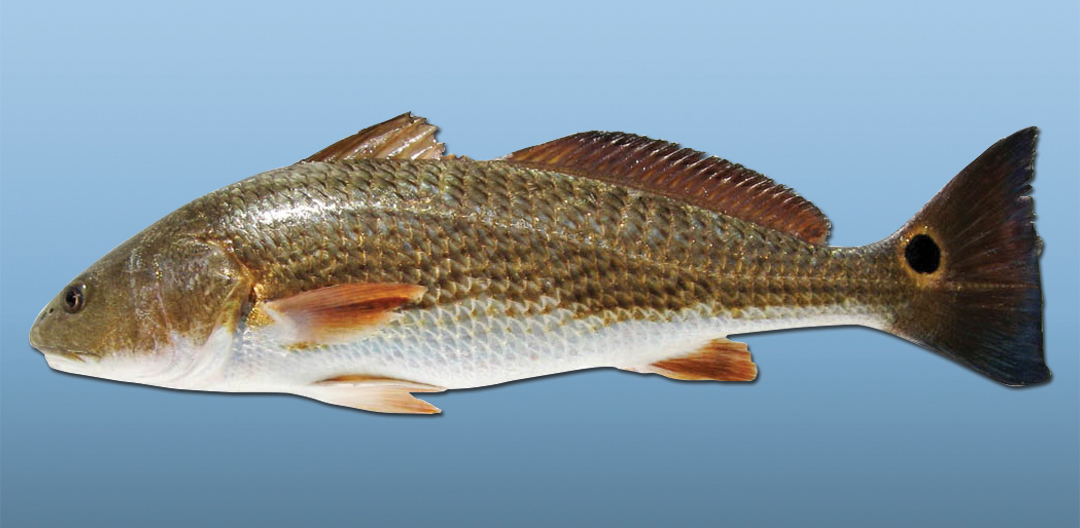
Red Drum
Scientific name: Sciaenops ocellatus
Common names: Red Drum, redfish, channel bass, tambour rouge (Cajun French), corvina (Spanish)
Order: Perciformes
Family: Sciaenidae (Drum family)
Description
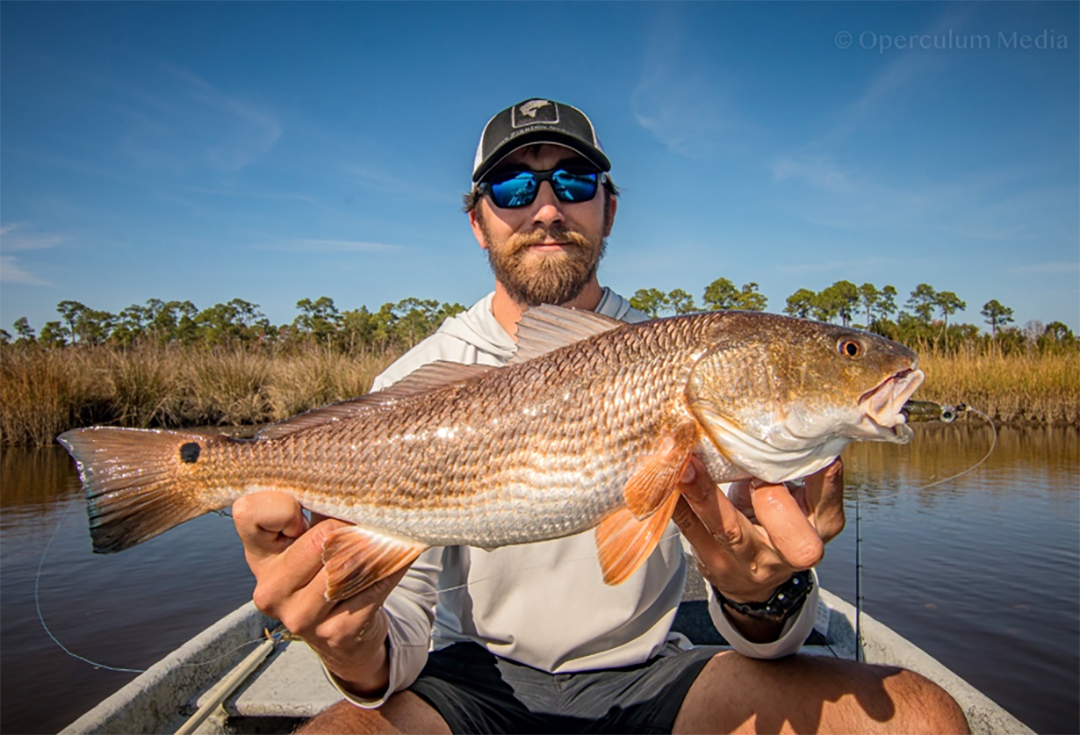
Red Drum caught in Mississippi Sound estuary. Photo credit: Captain Kyle Johnson,
Coastal Water Outfitters, Biloxi, MS.
______________________________
Red Drum are robust, elongated fish with moderately compressed bodies. Their head is straight in profile with a somewhat conical cross section. Unlike some other drums, the Red Drum has no chin barbels or "whiskers." The dorsal fin has two sections, with a spiny fin at front separated by deep notch from the soft dorsal fin. The scales are large and have jagged edges. The body color is typically an iridescent silvery gray, bronze or copper on the sides and whitish on the belly. There are one or more dark spots near the base of the caudal fin or tail. The species name oscellatus refers to these eye-like spots. Older fish tend to lose their excess spots. The tips of the tails of young fish, less than about 20", may be bluish. Large Red Drum (longer than about 30" in length) are commonly described as "bull reds," even though many of the larger fish are actually females. Smaller Red Drum (up to about 20" in length) are often called "rat reds." Red Drum may reach five feet in length and a weight of 90 pounds.
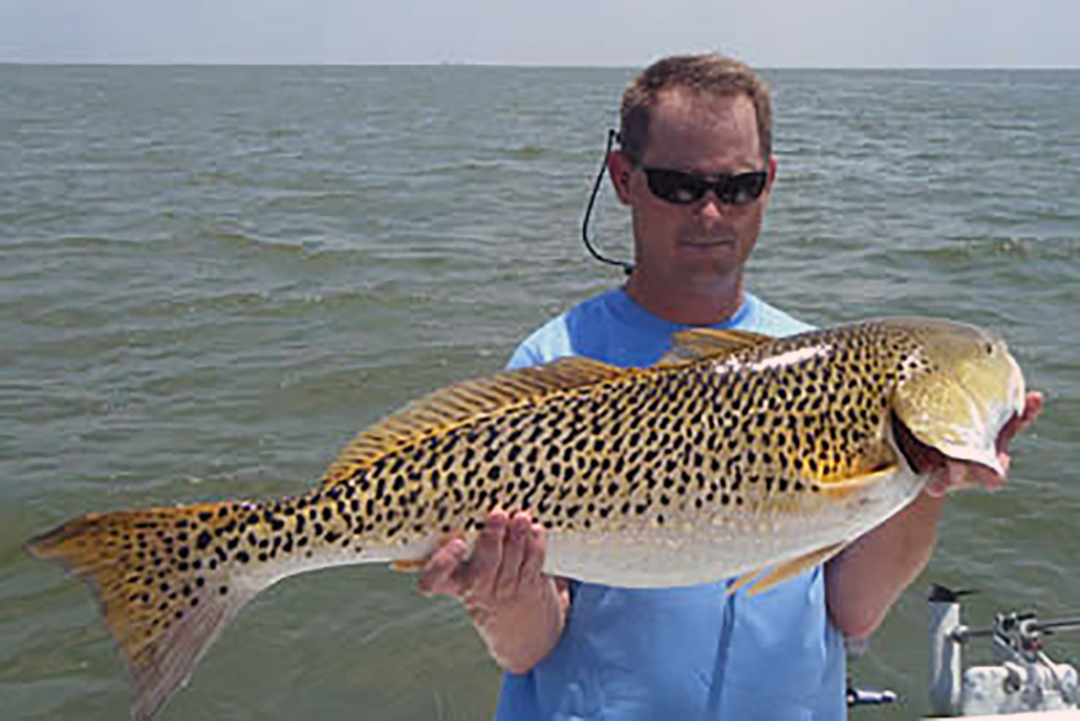
This 37" red drum had more than 970 spots per side. It was caught in East Galveston
Bay, Texas by Henry Perdue in June 2013. Photo by Captain Jim West, Bolivar Guide
Service.
______________________________
The color of Red Drum varies with the type of water they inhabit. Where the bottom is muddy and the water brackish, they tend to have a dark copper color. Fish living in surf areas and areas with higher-salinity water and sandy bottoms are lighter colored and may even be silvery or silvery pink. During the spawning season, the fins take on an orange color.
|
Tail of a juvenile Red Drum showing the characteristic spot and blue coloring. The blue tint usually disappears as the fish ages. Photo by Trevor Moncrief.
|
|
Occurrence
Red Drum are commonly found along the southern Atlantic coast from Chesapeake Bay to Key West, Florida, along the entire U.S. Gulf coast, and south to about Tuxpan, Mexico. Their range on the Atlantic coast may extend as far north as Massachusetts, though Red Drum are relatively rare north of Chesapeake Bay.
Red Drum can tolerate a wide range of salinity and water temperature. In the Gulf region, they are found in freshwater, lower reaches of coastal rivers, estuaries and the open Gulf. In general, young juvenile Red Drum are found in bays and estuaries and are particularly attracted to the edges of marshes and seagrass beds. Older juveniles and subadults prefer more open water over sand, mud, and seagrasses, but will also move into shallower water to feed on rising tides. Mature Red Drum tend to move offshore. Red Drum can survive water temperatures from 36 °F to nearly 100 °F, though rapid temperature changes may be fatal.
Biological Research
A recent study on Red Drum from Mississippi waters showed the age at 50% maturity was around 3 years of age (26.4 inches total length) in both sexes, but males were not spawning capable until age 4.5 (27.7 inches total length), and females were not spawning capable until age 5.8 (~33 inches total length). Red Drum can live for 30+ years and continue to spawn their entire lives.
The name "drum" for this species comes from the ability of the male, and the males of its drum family relatives such as the Spotted Seatrout and Black Drum, to produce a deep drumming sound by contracting muscles on either side of the swim bladder, often said to be similar to ‘rubbing a finger over a balloon’.
As Red Drum reach sexual maturity, they move offshore to spawn. In Mississippi waters, Red Drum spawn from late September through November, often near barrier island passes. Male Red Drum congregate and “drum” to attract females, with the sound increasing at dusk. Red Drum are broadcast spawners with external fertilization of the eggs. Spawning takes place during the night, and according to observations, the males nudge the females in their abdomens to induce release of the eggs, which are then immediately fertilized.
Individual Red Drum can spawn every three to five days during their spawning season, and a single female can produce as many as two million eggs per individual spawning event, with a possible production of 20-40 million eggs per spawning season. The fertilized eggs are spherical and measure approximately one millimeter in diameter. They are clear and contain tiny oil droplets which provide flotation and nourishment for the larvae once hatched, in addition to that provided by the yolk sac. The eggs hatch after about one day following fertilization and larvae are carried through the island passes and inshore by tides and currents. The larvae live off their attached yolk sac for about three days, then begin to feed on plankton.
Red Drum larvae remain in the water column for several days. In Mississippi, the larvae settle in shallow water among seagrasses, etc. that provide shelter from predators and tides. As they grow, they move further into the estuary, and during their first winter, juveniles begin moving into the deeper water of bays and bayous. By age one, Red Drum may gradually move toward the outer regions of the estuary with the arrival of cold weather, returning to shallower water in the spring. However, many juveniles remain in the shallower estuary.
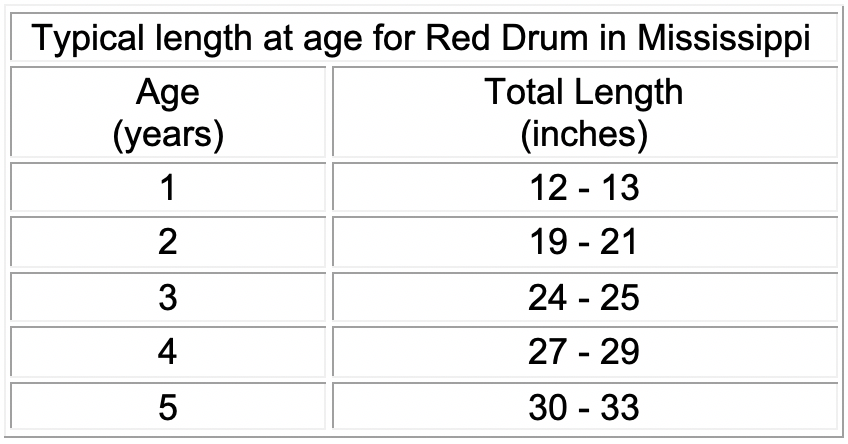
Red Drum grow rapidly during the early years of their lives, with growth slowing after age five. Males and females show similar growth and size patterns. Growth rates vary with location with Gulf coast fish reportedly growing faster than those in other locations. Red Drum are typically bottom feeders. Blue crabs make up a large part of their diet, but fish and shrimp are also eaten, including menhaden, mullet, spot, croaker and flounder.
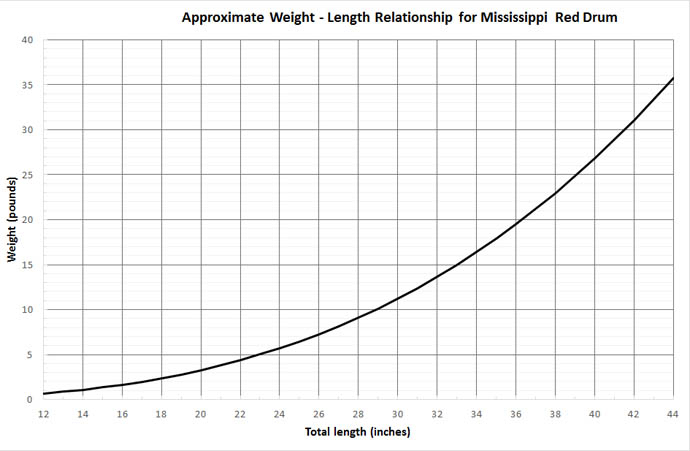
Approximate weight-length relationship for Red Drum in Mississippi. Source: "Aspects of the Biology of the Red Drum, Sciaenops ocellatus, in Mississippi". Robin M. Overstreet, Gulf Coast Research Laboratory, 1983
Management
Red Drum are managed in each Gulf and South Atlantic state by specific catch/harvest regulations. In Mississippi waters, the recreational catch is regulated by a size limit of 18 – 30 inches total length and 3 fish/person daily possession. Recreational anglers may retain only one Red Drum over 30 inches total length per day. The commercial harvest is regulated by a size limit of 18 – 30 inches total length and a total allowable catch (TAC) quota of 60,000 pounds per year. Commercial fishers may retain only one Red Drum over 30 inches total length per day. Catch/harvest of Red Drum in U.S. federal waters is prohibited.
